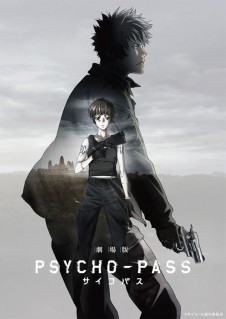Loading
Search
▼ JAPANIMATE / Evolution of anime films
- Category:Other

THE JAPAN NEWS
In recent years I really feel feature-length anime films made for theatrical release are evolving at a remarkable speed.
That’s because these films, many of them based on TV anime, are widely and socially recognized, loved and appreciated, and they draw public attention much faster and more widely than before to the extent they may overturn the preconception that “anime films are for anime fans.”
Their increased recognition can be attributed to development of the Internet and social media like Twitter, which spread information quickly and widely, but it also owes much to the fact that preconceptions and prejudices against anime have been reexamined. There are also more works that appeal to wider audiences of all ages and both sexes.
Many anime films in the past were released at cinemas during the school holidays so families with children could go see them. Naturally, those films were mainly targeted at children. They include “Doraemon,” “Dragon Ball” and “Crayon Shin-chan,” which are still regularly made into films, and Studio Ghibli works.
Anime films for older audiences existed as well. In recent years, however, the number of such films and the genres they’re made in are drastically increasing. The timing of their theatrical releases is not affected by season, and some of these films have become a social phenomenon. All this adds up to wider exposure of those films to the public. Newspapers and TV news sometimes cover the films as well, even running special features in some cases.
When a TV anime is made into an anime film, there are three elements at work: a good story, a realistic feel through advanced picture and sound quality, and a growing general demand for anime films.
First, let’s look at the story. Most anime films have their own stories, which were not told in the original medium (manga or a novel in many cases) or in the TV anime versions, making them worth seeing. Trailers shown at theaters and TV commercials hype the new story, and fans look forward to a story they haven’t seen before. In some cases, the film is a sequel to a TV anime, which in itself makes expectations run high for those who enjoyed the TV version.
Second is the advanced quality of anime films today. The use of computer graphics has diversified, and the level of achievement in the whole package, including the characters’ movements, the vividness of the color and the sheer power of the sound, is rapidly improving.
The third point is the growing demand for these films. There are three release formats for commercial anime in Japan: TV anime, OVA (original video anime, which are sometimes shown at theaters) and anime films for theatrical release. As there have been many successful cases of anime films often made from popular TV anime or OVAs, calls for more such films seem to be growing stronger than ever.
Two new anime films are drawing particular attention from the public this winter: “Shingeki no Kyojin: Zenpen — Guren no Yumiya,” the first part of the film version of “Shingeki no Kyojin” (Attack on Titan), currently showing in cinemas, and “PSYCHO-PASS,” which will be released in January.
My personal recommendation is “PSYCHO-PASS.”
Its story makes you think deeply about police institutions and crime-fighting in the near future. The film version is more dramatic than the TV version and places more weight on the characters’ feelings, making it more oriented toward adult audiences. It is a Japanese anime, but the story has a magnificent scale that transcends regional boundaries. It is highly recommended to audiences outside Japan as well.
Anime films became a huge social phenomenon in the mid-1990s after “Shinseiki Evangelion” (Neon Genesis Evangelion) arrived on the scene. As of this year, the “Evangelion” saga has not yet been completed. Even now, each new release of its anime films is a huge event.
Since 2000, many anime films have drawn public attention and achieved massive box office success. They include “Toki o Kakeru Shojo” (The Girl Who Leapt Through Time), the “Maho Shojo Lyrical Nanoha The Movie” (Magical Girl Lyrical Nanoha) series, “Suzumiya Haruhi no Shoshitsu” (The Disappearance of Haruhi Suzumiya), “Keion!” (K-On!), the “Tiger & Bunny” series and the “Maho Shojo Madoka ☆ Magika” (Puella Magi Madoka Magica: The Movie) series. They all boast huge popularity and have sold many copies on DVD and Blu-Ray.
Today’s Japanese feature-length anime films are entertainment appreciated by people of all ages. Worldviews and expressions that only anime can create are entertainment in a different dimension from live-action films.
Anime films can inspire people, move them, and encourage them to grow and think. They are a culture that continues to grow, a culture Japan can proudly present to the world. I hope many more people from other countries will see many Japanese anime films.
(The next installment will appear Jan. 3.)
Saito is in charge of games at Animate’s headquarters. To get more information on Animate, visit www.animate.co.jp.
- December 9, 2014
- Comment (0)
- Trackback(0)

